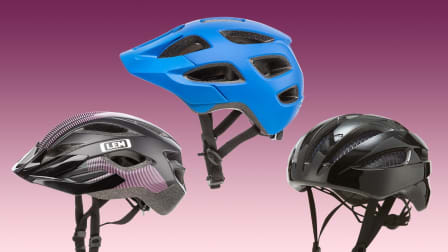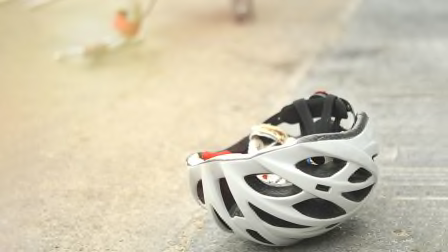What Happens When Consumer Reports Tests Bike Helmets
A peek at some of the most slammin’ tests we do
CR’s staff of scientists and engineers test hundreds of models of products behind the closed doors of our labs, where the smell of freshly baked cookies or the sound of repeated flushing is sometimes the only clue to what’s going on inside.
I already followed the sound of those flushes to find out how we test toilets. This time, I knocked on the door of CR’s tallest lab, where we test bike helmets—one of the most critical personal safety products we evaluate. CR testers Jose Amezquita and Matthew Guayara let me watch them butt heads (literally, metal headforms), snap chinstraps, and perform other evaluations to determine which bike helmets pass and which fail CR’s battery of crucial safety tests.
Jose Amezquita and Matthew Guayara are CR’s bike helmet testers.
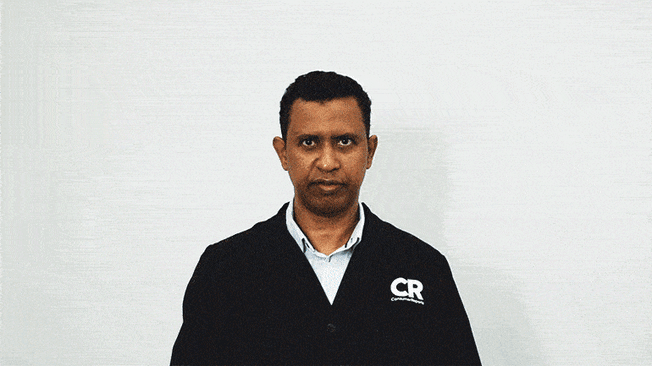
GIF: John Walsh/Consumer Reports GIF: John Walsh/Consumer Reports
CR tests helmets once a year, and a lot of interesting stuff happens between the time the helmets arrive in the lab and the moment updated ratings are published on our website.
CR’s shopping team buys several of each helmet and sends them to the lab.
Our market analyst chooses the most popular models—for road cyclists, trail riders, BMXers, skateboarders, and commuters—that you’re likely to see when shopping.
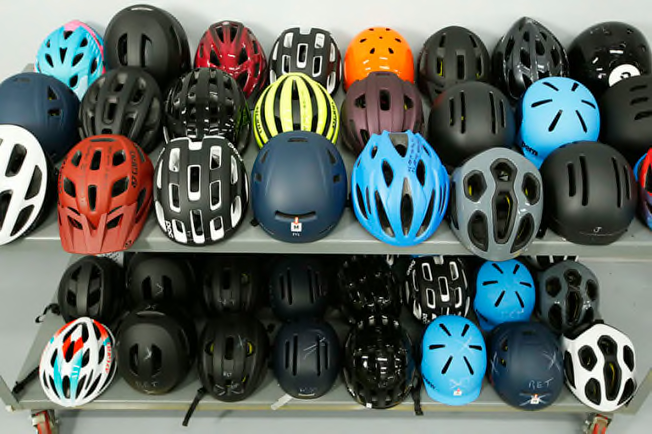
Photo: John Walsh/Consumer Reports Photo: John Walsh/Consumer Reports
The helmets rest at room temperature (62° F to 81° F) for at least 4 hours before testing because both heat and cold can slightly affect their performance. Because we’re doing comparative testing, we want to make sure they all start off on equal footing.
After they’re well-rested, helmets that come in various sizes (as opposed to universal or one-size-fits-most types) get fitted with a properly sized metal headform (they come in sizes A, E, J, and M). The best fit for our testing is the smallest headform that fills the helmet without extra padding.
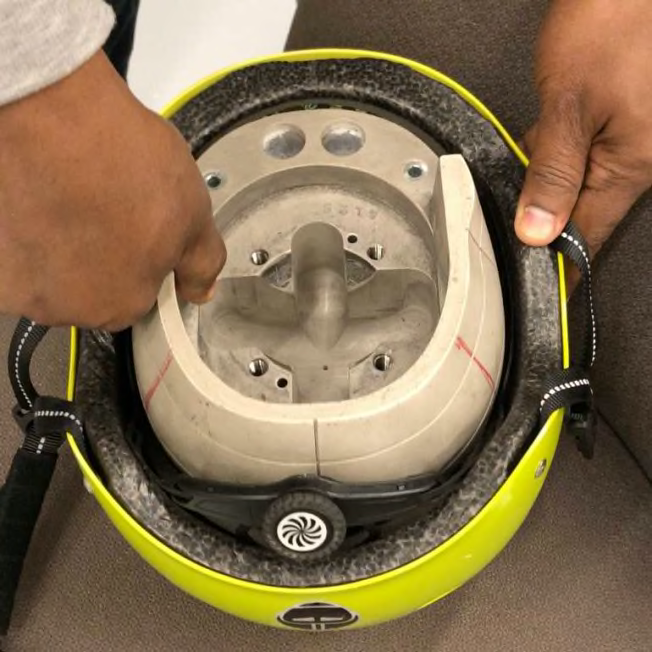
Photo: Perry Santanachote/Consumer Reports Photo: Perry Santanachote/Consumer Reports
Random observation: Matthew just happens to have a size M head, and Jose has a size J head. The two attempt some serious head-modeling with their corresponding headforms, below.
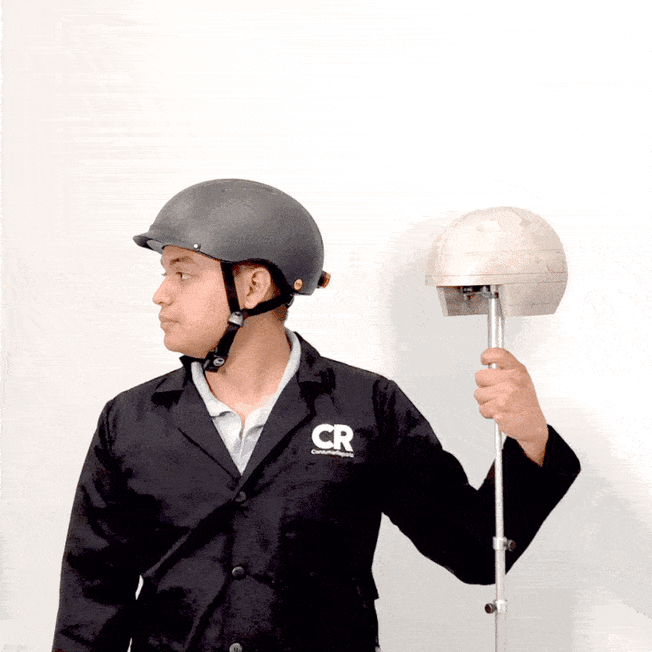
GIF: Perry Santanachote/Consumer Reports GIF: Perry Santanachote/Consumer Reports
Testers perform the chin strap test.
This test checks the retention system—the straps, connection points, and buckle that are supposed to keep a helmet on your head.
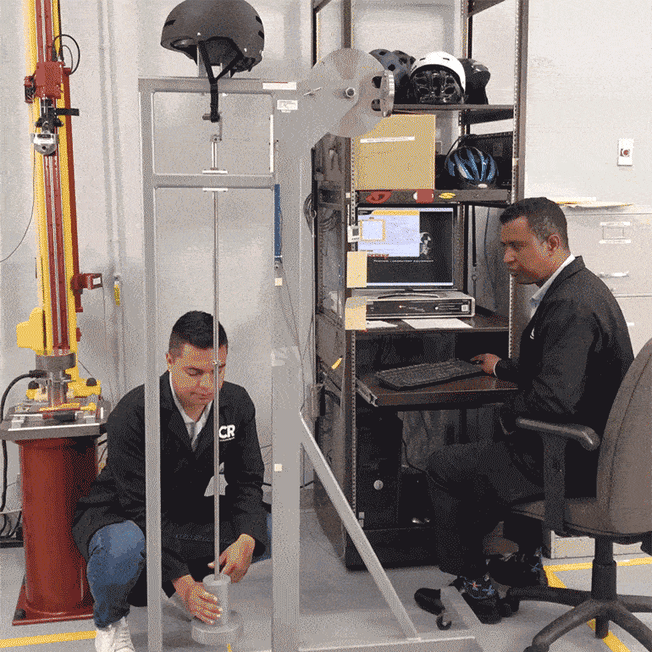
GIF: Perry Santanachote/Consumer Reports GIF: Perry Santanachote/Consumer Reports
Matthew drops a weight to tug at the helmet’s strap, simulating what could happen in an accident—like if your body skids across the road with velocity while the helmet grabs the pavement. If the straps loosen significantly, the helmet gets a lower score. If the buckle breaks or fully releases (as it does here), the helmet gets a big fat ‘F.’ Matthew repeats the test with a fresh helmet just to make sure the failure wasn’t a one-off (it wasn’t).
For this and the following test, two samples of a helmet model must perform satisfactorily for it to pass. Likewise, two samples must fail for a model to fail. When that happens, CR alerts the Consumer Product Safety Commission and the manufacturer, and designates the helmet as a “Don’t Buy: Safety Risk” in our ratings. For these helmets, testing ends here. “If a helmet can’t stay on your head, it doesn’t matter what else it can do,” Matthew says.
Testers perform the impact test.
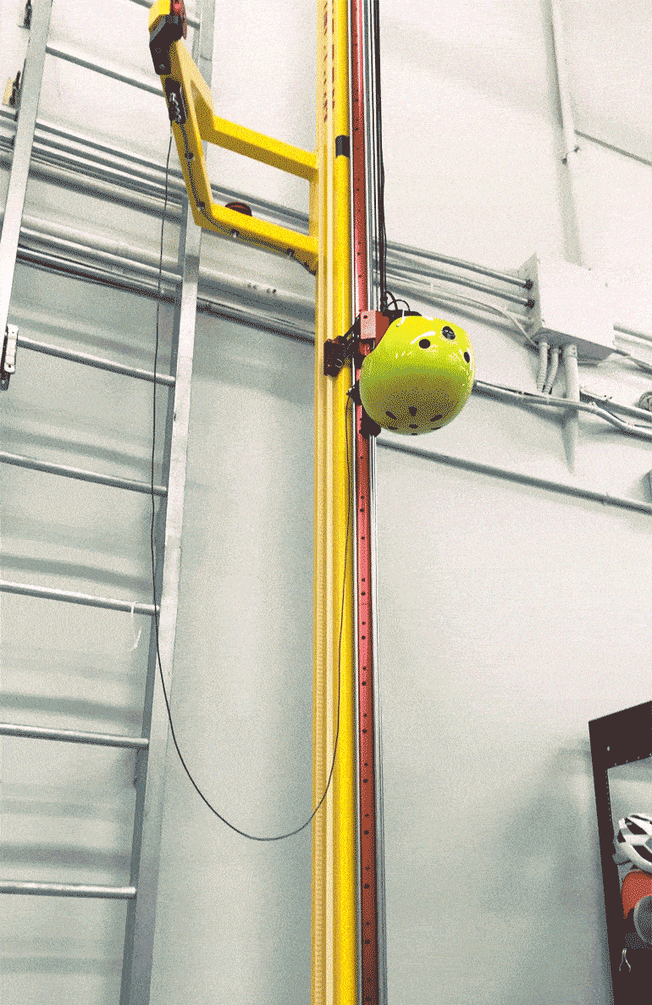
GIF: Perry Santanachote/Consumer Reports GIF: Perry Santanachote/Consumer Reports
To test how well a helmet can absorb the force of an impact, Jose attaches a helmeted headform to a uniaxial monorail impact machine that hoists it 6.5 feet before dropping it. The helmet free-falls at about 14 mph onto a steel anvil—just like an amusement park drop-tower ride . . . minus the brakes. (These distance and speed numbers are based on CPSC safety standards and approximate the sort of skull-slamming you could suffer if you fall off your bike.)
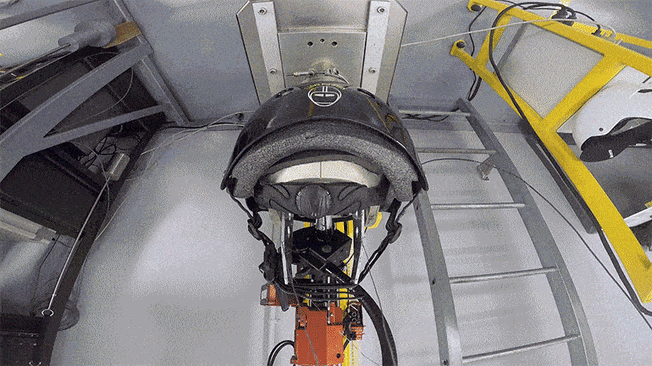
GIF: John Walsh/Consumer Reports GIF: John Walsh/Consumer Reports
Jose performs this test on the helmet’s front, rear, sides, and crown. As the helmet hits the anvil, a sensor detects the amount of g-force exerted on the head form. Anything in the 300 to 320 G range is considered a potential failure and triggers additional testing.
We want cracked helmets, not cracked skulls.
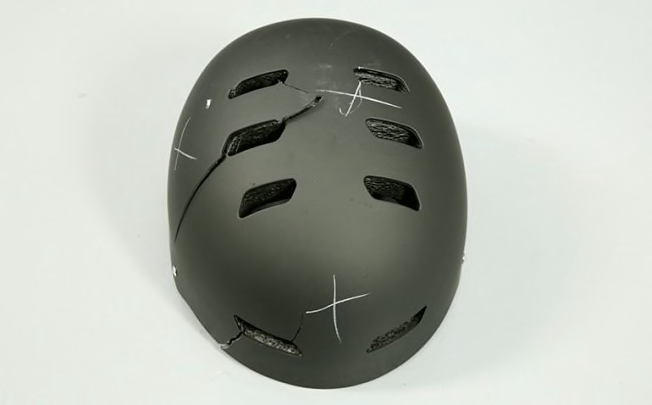
Photo: John Walsh/Consumer Reports Photo: John Walsh/Consumer Reports
With some products we test (hello, smartphones!) a crack could mean disaster for the durability rating, but breakage during bike helmet testing isn’t necessarily a bad thing. In a crash, the helmet’s job is to absorb as much of the impact as possible to protect your noggin. Sometimes, that impact cracks the helmet and that’s okay. Better your helmet than your head.
Remember: Your helmet is designed to withstand one bump. That’s it. Even if it looks fine after a crash, trash it and buy a new one. “Damage can be hard to detect,” Jose says. “The insides of the helmet can compress and lose the ability to absorb any more energy.” Translation: Your head will take the hit. Hard.
Testers go for a ride.
In a rollie chair.
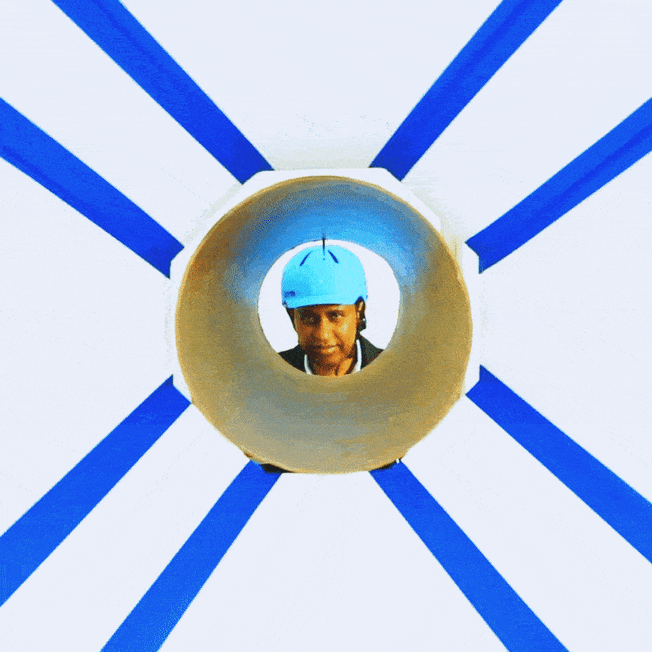
GIF: John Walsh/Consumer Reports GIF: John Walsh/Consumer Reports
To subjectively gauge how well the helmet ventilates for comfort (nobody likes a sweaty scalp), Jose simulates a ride by sitting in a chair in front of a wind tunnel blowing at 17 mph. The wind tunnel allows for repeatable conditions that riding a bike outdoors would not.
Testers assess ease of use.
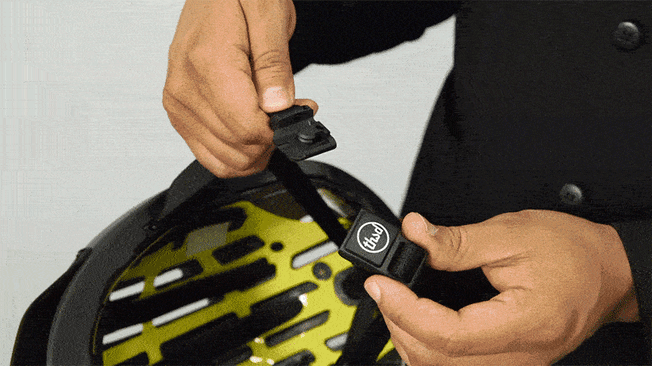
GIF: John Walsh/Consumer Reports GIF: John Walsh/Consumer Reports
Matthew evaluates how easy or hard it is to open and fasten the chin strap buckle—and docks points for those that pinch, are stiff, or restrict finger access. He says the magnetic buckles (shown above) are generally the best but not very common.
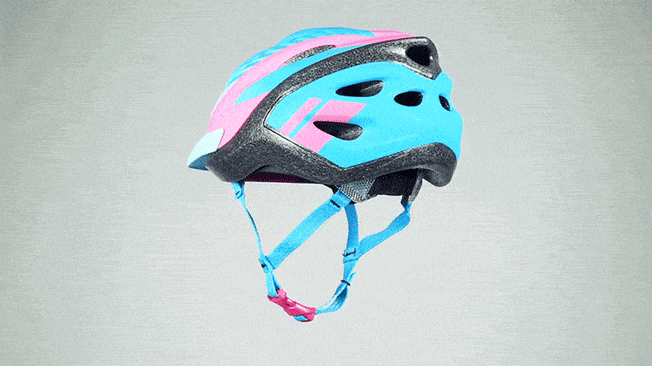
GIF: John Walsh/Consumer Reports GIF: John Walsh/Consumer Reports
He also adjusts the straps and occipital clamp, which sits at the rear base of the helmet and hugs your head for a tighter fit. Top scorers have flexible, soft straps that slide like butter, with easy-to-open locking tabs. Occipital clamps ideally adjust automatically or with an easy-to-turn dial.
If you’ve ever thought that helmets look like futuristic takeout soup containers (what, just me?) it’s because most of them are made of expanded polystyrene (EPS), a type of plastic foam similar to the one used to make restaurant takeout containers. EPS is light, durable, and partially puncture-resistant when covered by a plastic shell—a perfect combo to protect your head, if not your order of ramen to go.
Testers look at each helmet’s special features.
Some features boost either comfort or safety.
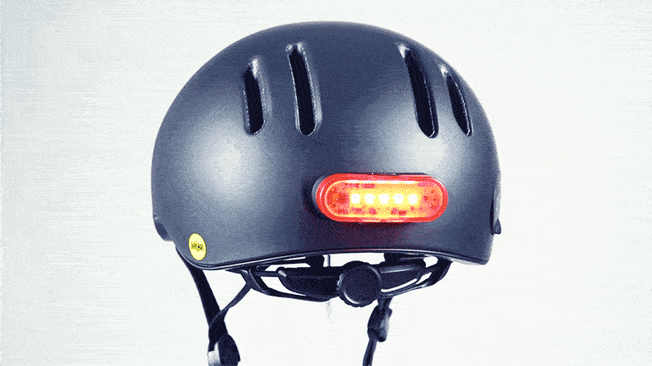
GIF: John Walsh/Consumer Reports GIF: John Walsh/Consumer Reports
To see how a helmet’s reflectors and/or LED lights could appear in a car’s headlights, testers darken the lab and use a flashlight to illuminate the helmet from 10 feet away. It’s not a test, but it’s noted for each model’s ratings page.
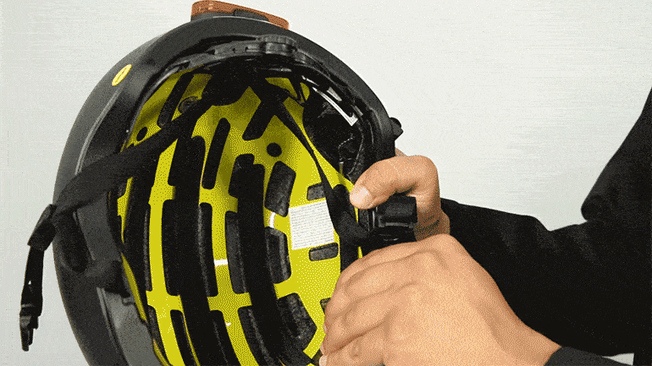
GIF: John Walsh/Consumer Reports GIF: John Walsh/Consumer Reports
“If you crash and hit the ground on a corner of the helmet, that rotational force is going to twist your neck and can lead to concussion,” Matthew says. The multidirectional impact protection system (MIPS) shown here reacts to hits by shifting slightly to minimize that twisting motion. Seeing this convinced me that it’s time to upgrade my helmet. Most bike helmets that CR recommends have this (or similar) technology, but we don’t currently test this function.
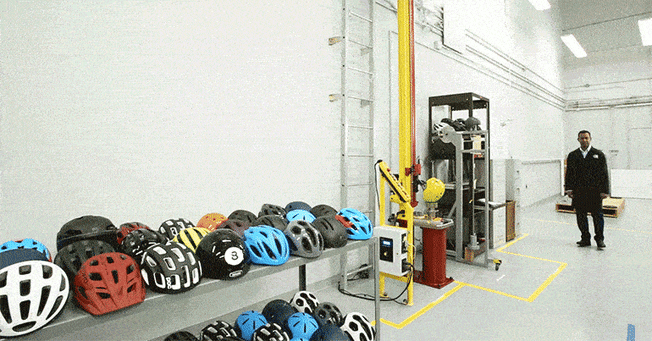
GIF: John Walsh/Consumer Reports GIF: John Walsh/Consumer Reports
Fun fact: Lab 122 is Consumer Reports’ tallest, at 27.5 feet. It’s the only one that can accommodate the 17-foot-high impact machine used to test bike helmets. The lab’s floor surface is also particularly well-suited for dancing, which we determined after some (very unofficial) testing at the end of the day.



















































































